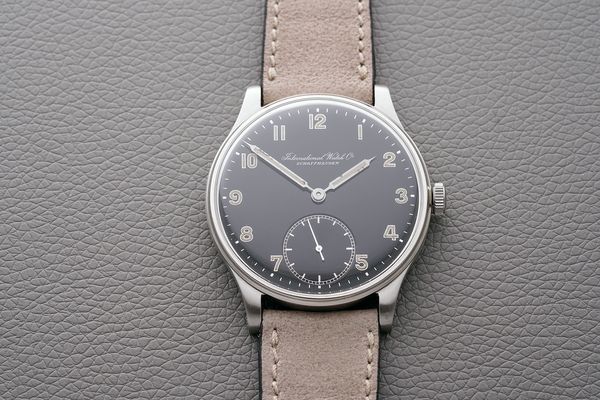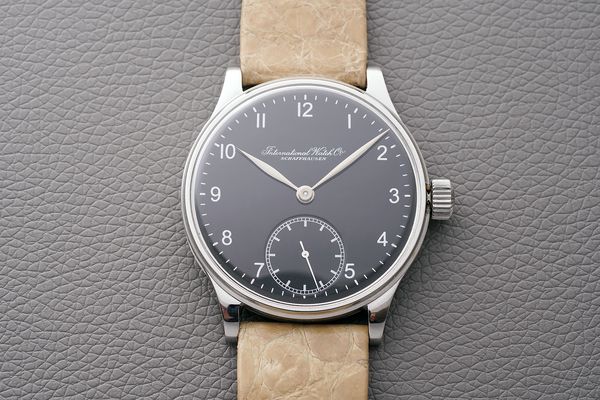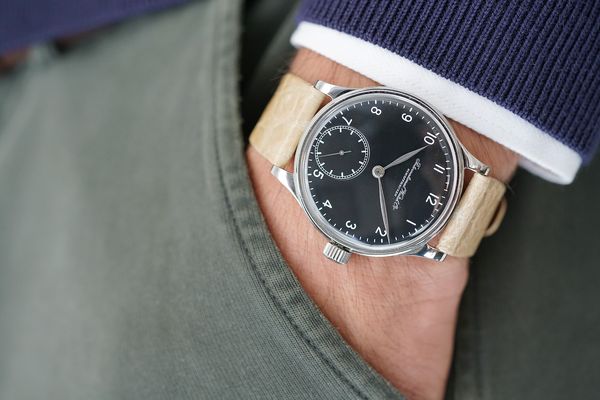- By Arthur Touchot
Made following a special request in the late 1930s by two Portuguese businessmen who believed – before anyone else – in the potential of large wristwatches, the original Portugieser was born without a name or reference number, and a look at IWC’s archives reveals that not even company envisioned it would one day become one of its most well-known wristwatches.
For more than forty years, the unusually large (41.5mm) wristwatch would be made only punctually and in very small batches, each time using the same methodology. In order to satisfy the orders received for this model, IWC, turned to its most reliable and accurate pocket watch movements, the cal. 74 and cal. 98 at first, before producing some years later the pocket watch cal. 982.
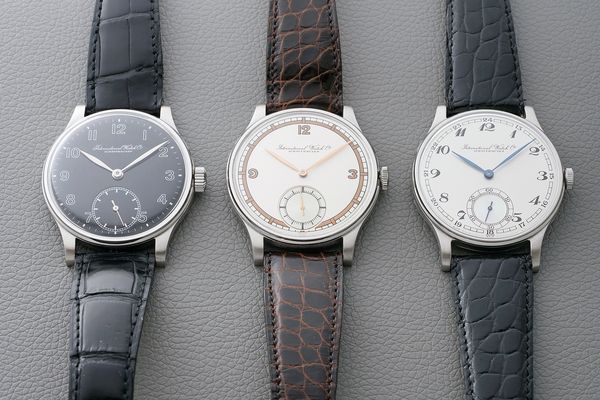
Today, these movements distinguish the three versions of the original Portugieser, the ref. 325. IWC have been able to confirm through their archives that exactly 690 ref. 325 models were sold between 1939 and 1981, making it one of the rarest and most sought-after timepieces from the 20th century.
Because all of the ref. 325 are so unbelievably close in their design, it can be quite difficult to determine which batch – or even, which era – a specific model belongs to. The best and only sure way of doing so is to open the case back and check the calibre model inside.
Today, we look at some of the historic pieces from the first, second and third generation ref. 325 - including two models coming up for sale in The Geneva Watch Auction: EIGHT and Styled. Timeless Watches and How to Wear Them - to better understand what makes these watches special and why they are so coveted.
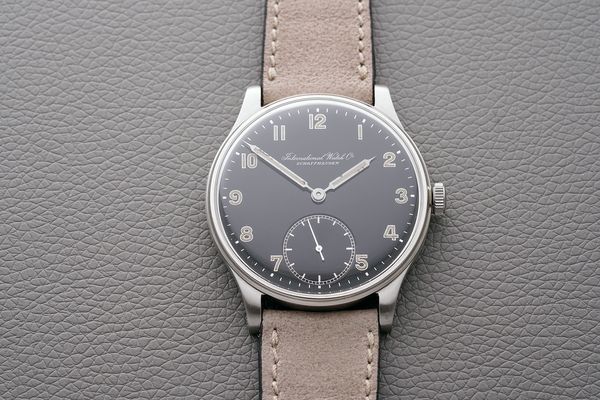
To create the very first Ref. 325, IWC turned to one of its best pocket watch movements at the time, the cal. 74 with subsidiary seconds at 6 o’clock. Made in the 1930s and until then reserved for the watchmaker’s hunter-style pocket watches, the cal. 74 was a thin 17 lignes movement known for its reliability and precision.

Because of the size of the balance wheel, IWC could produce a wristwatch that was larger but also more precise than those in fashion at the time – men then wore wristwatches measuring between 30mm and 35mm. In order to wear the cal. 74 on the wrist, IWC’s watchmakers turned to Wyss & Cie, a casemarker based in Biel, to create a custom three-part case, with a grooved bezel, a middle section and an open steel back.
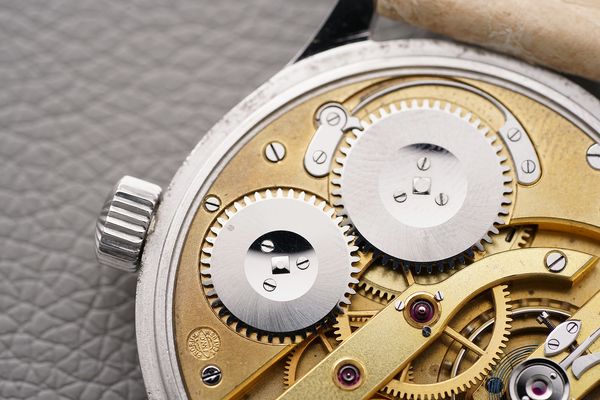
Made from Staybrite stainless steel, a corrosion-, acid- and scratch-resistant type of steel which proved extremely popular with other watchmakers, the cases were satin-finished on the middle section and polished on the horns and bezel. A large crown, designed to be easily wound, completed what would become the definitive Portugieser case – referred to in IWC’s records as “Mod. 228” throughout the watch’s stop and start production.
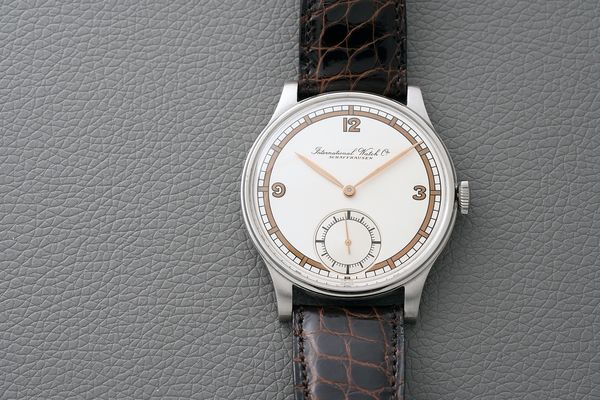
Ironically, the first watches were delivered thousands of miles from the Iberian Peninsula. Instead they arrived in Odessa, Ukraine on February 22, 1939 and a few months later in Lviv - then still part of the Second Polish Republic.
Those responsible for the creation of the pocket-watch powered wristwach would have to wait three more years before seeing a Portugieser but finally, on February 2, 1942 and on June 17 of the same year, several models were delivered to Pacheco and Rodrigues & Gonçalves, two retailers based in Lisbon.
The first models sold to Rodrigues & Gonçalves were registered in the company records as “Ref. 228” after the 228 case model. To clear away confusion, IWC would soon after introduce the reference number 325.
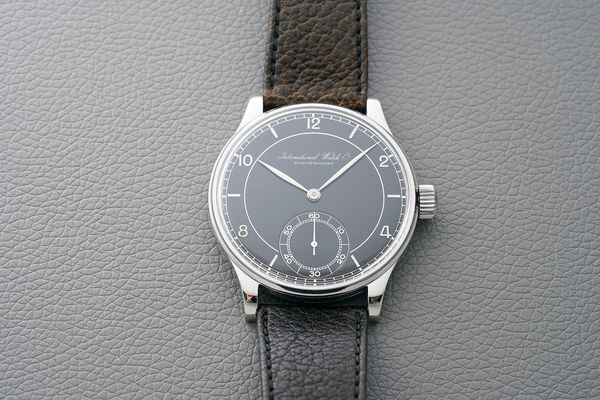
A short time after the delivery of the first 74-calibre Portugieser watches, IWC began offering models with the cal. 98, another 17”’ H4 pocket watch movement (H4 indicates a height of 4mm). Because the movement’s proportions were identical, IWC did not make any modifications to the design of the watch, and on the surface, the two version are indistinguishable from each other.
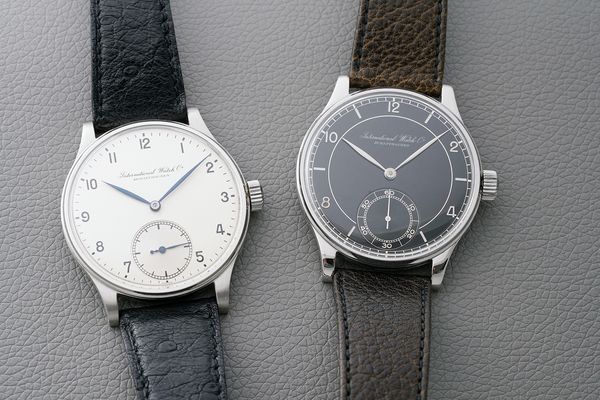
What makes almost every ref. 325 unique is its dial. A quick glance at some of the known vintage Portugieser models reveals the great variety of styles used throughout the years. Unsurprisingly, it seems the first models were modelled after dials made for the company’s pocket watches.
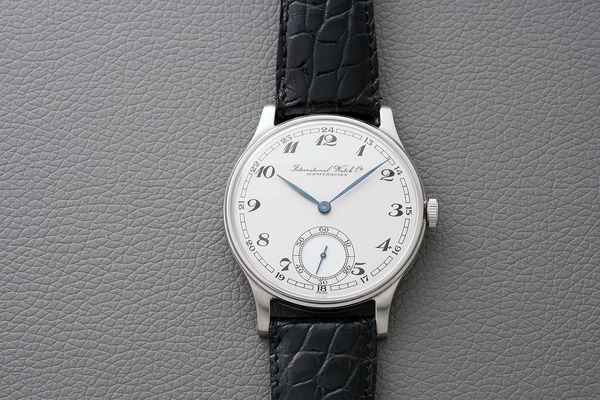
Later IWC played with colour, materials and typefaces to produce dials that were always aiming for a classic and timeless aesthetic. They could be silvered, black or white, with plain Arabic numerals – sometimes painted, and sometimes applied – or Breguet numerals.
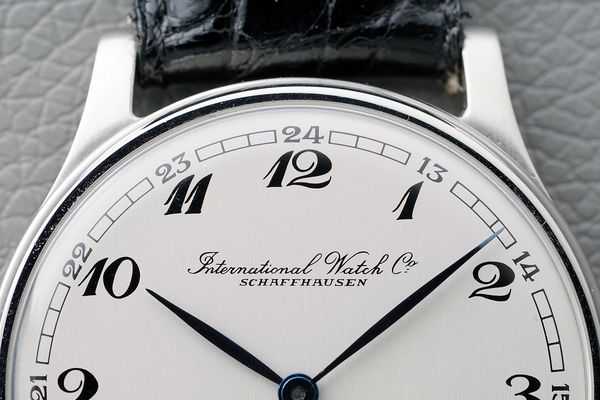
In some instances, there is a definite attempt to create a fashionable watch – the following sector dial with copper highlights is very reminiscent of the Art Deco period during which it was made, for example.
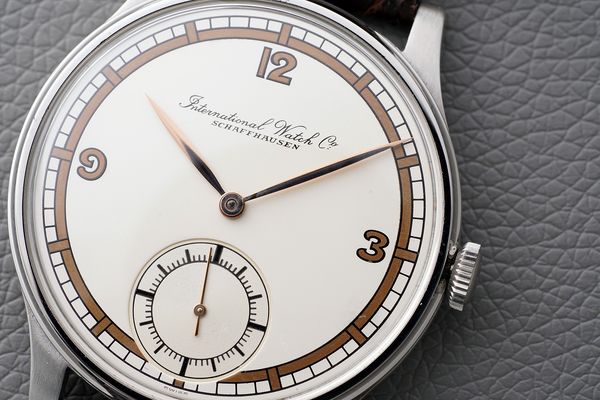
In others, such as this first generation cal. 74 model with luminous indexes, we are reminded that meant to become navigation tools. As the hallmark on the bottom right lug shows this watch was delivered to Portugal, and it is quite possible it was purchased by someone requiring a watch offering good nocturnal legibility.
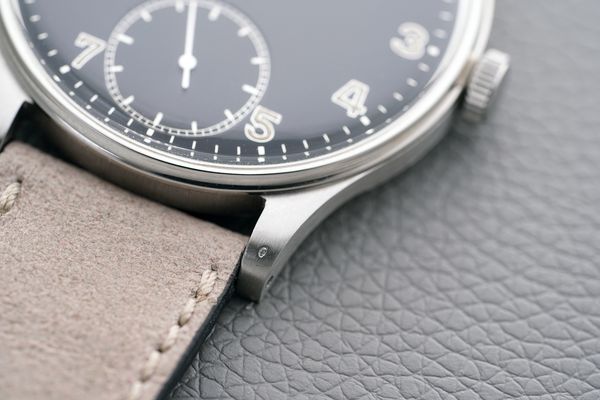
All of the watches imported into Portugal country present this unmistakable hallmark – known as a puncao – which is stamped by hand into the watch to prove that the import duty had been paid. They were made at one of the “contrastarias”, the regional customs offices operated by the Portuguese Mint. According to IWC’s archives, only 141 models were ever delivered to Portugal.
IWC would return to the reference 325 once more in the late 1970s, when Golay Fils & Stahl, a Geneva-based dealer with prior experience selling cal. 98 bearing ref. 325 models, began to renew its interest in the piece.
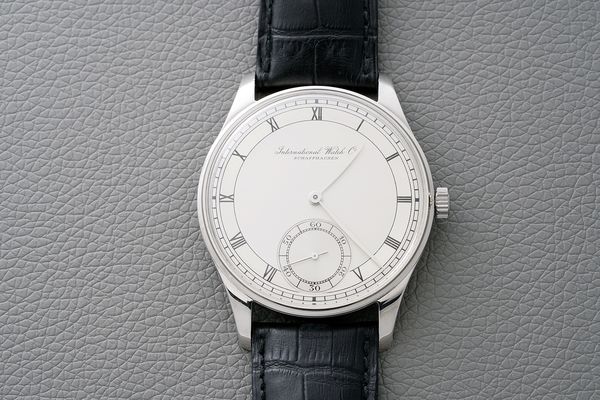
Following an internal debate regarding the profitably of the project – no one apart from Golay had bought a ref. 325 during the 1960s – the decision was made to produce a new generation with an updated version of the cal. 98. As a result, the manufacture’s watchmakers developed the cal. 982, the first ref. 325 movement to feature a shock absorption system and a monometallic Glucydur®* balance.
Despite the innovations made by IWC’s team, Golay ultimately withdrew their interest shortly after the first watches were made, and the watchmaker soon cancelled the production of the piece. Only 57 were fully assembled between 1977 and 1981. Most were delivered to IWC’s retailer in Frankfurt, Germany, but a small number were delivered to other watch retailers in Europe.
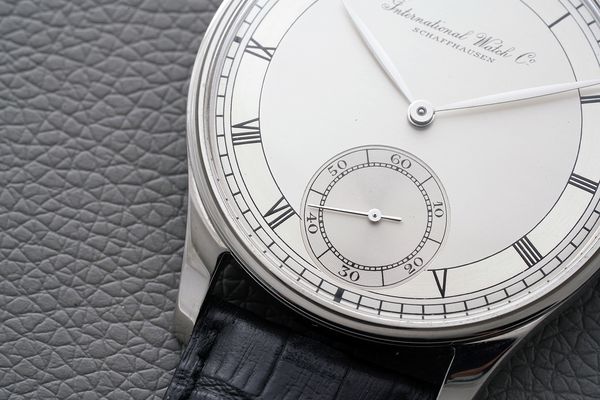
Because many were found in Germany though, the third version of the ref. 325 is often referred to as the “German Edition”. It was the very last we would see of the ref. 325 before the Portugieser’s official christening in 1993 with the launch of the IWC Jubilee Portugieser to celebrate the company’s 125th anniversary.
And just like that, the watch without a reference became one of the company’s strongest symbols: a watch ahead of its time, a design that remained steadfast whilst other watches went in and out of style, a tool so precise and so useful that orders kept coming despite the watch’s unfashionable size until even the company had to acknowledge it, name it, and recognize that it been an integral part of IWC’s long and rich history.
Phillips in Association with Bacs & Russo would like to sincerely thank Dr. David Seyffer, IWC Museum Curator, for his invaluable assistance in researching the present article.
